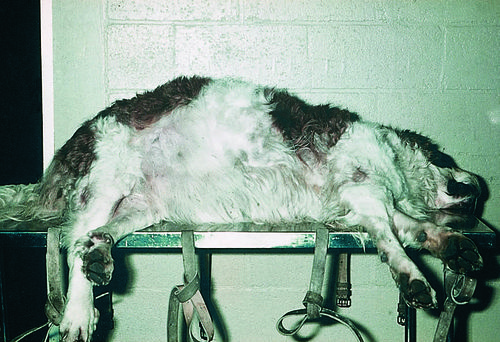Small Animal Soft Tissue Surgery Q&A 02
| This question was provided by Manson Publishing as part of the OVAL Project. See more Small Animal Soft Tissue Surgery Q&A. |
An eight-year-old St. Bernard is presented with signs of depression, abdominal distension and non-productive vomiting.
| Question | Answer | Article | |
| What is the most likely diagnosis? | Gastric dilatation-volvulus. |
Link to Article | |
| Describe the initial presurgical therapy. | Initial treatment consists of gastric decompression and treatment of shock. Gastric decompression is achieved by passing a stomach tube, percutaneous needle trocarization or temporary gastrostomy. |
Link to Article | |
| Describe the surgical correction of the problem, and name different surgical techniques to prevent recurrence. | A standard midline laparotomy is performed and the stomach is repositioned and decompressed. Stomach contents are removed using a large stomach tube or through a gastrotomy incision. The viability of the stomach is evaluated and non-viable parts are resected. The spleen is repositioned and inspected. Splenectomy is performed if viability is in doubt. The stomach is secured in a normal position by attaching the pyloric antral region to the adjacent right abdominal wall. Gastropexy techniques include tube gastrostomy and circumcostal, belt loop and incision gastropexy. |
Link to Article | |
